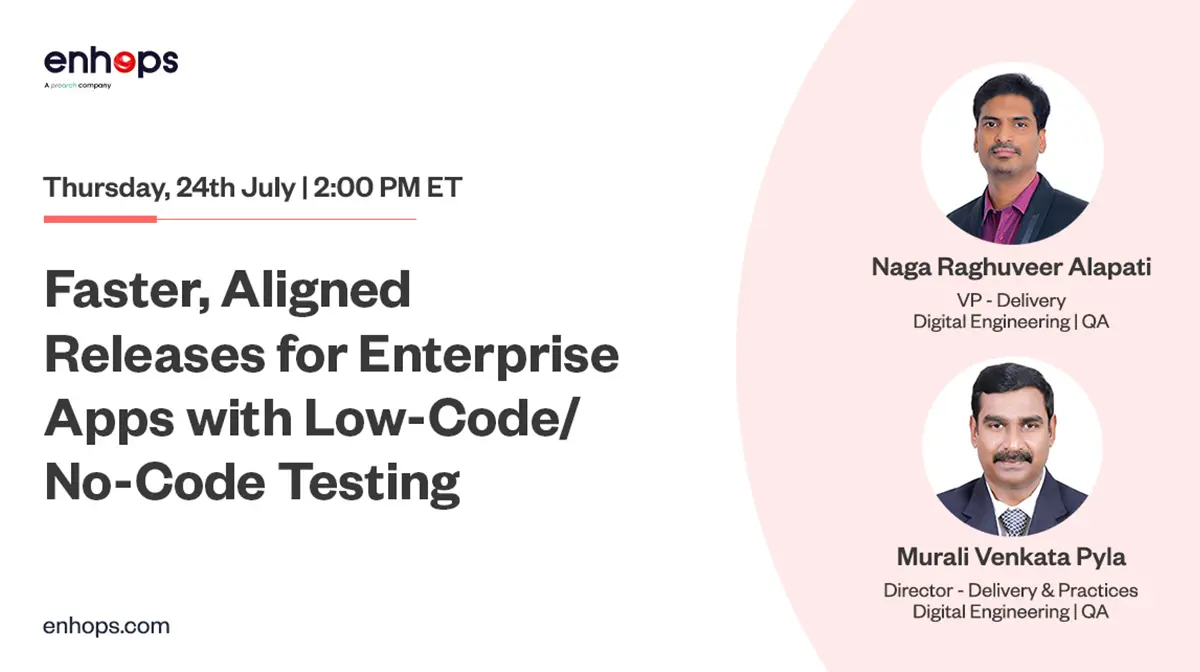According to MarketsandMarkets, the smart factory market is expected to grow from $100.6 billion in 2024 to $164.0 billion by 2029, a CAGR of 10.3%. Smart factory technology adoption rose from 12% of all factories in 2018 to over 33% by 2022. Europe currently leads in smart factory adoption, with over 40% of factories incorporating elements of Industry 4.0.
Along similar lines, IDC predicts that by 2025, more than 50% of large manufacturers will automate over 25% of their floor and plant operations using industry 4.0 capabilities. However, implementing these technologies takes work. These technologies have their share of integration, implementation, and automation challenges. These challenges can be overcome by implementing and adopting continuous testing programs. In this article, we will delve deeper into implementation challenges and how continuous testing helps in overcoming them –
1. Rise of Data-Intensive Systems – With smart factories and industry 4.0 technologies, there’s a massive rise in interconnected sensors and devices. This, in turn, means teams must prepare systems for continuous input, processing, and output of data. Any lag in systems can result in delayed decision-making, leading to errors that will multiply downstream.
This challenge can be resolved by continuous testing and monitoring. Continuous performance testing helps in testing the data and user load and how it is impacting the user experience including throughput capacity and transaction responses time. Performance testing helps in understanding how compounding data growth will handle systems in few years. It also reveals architectural bottlenecks to reveal alternate architectural requirements. It also helps in determining the right resources and their need for upscaling and downscaling.
Data testing helps in transferring and testing data from one system to another and understand the interoperability variables.
2. Integration Complexities – Smart factories and industry 4.0 implementation involve major challenges around integrating physical devices such as hardware, sensors, IoT devices and software. As the devices increase, interoperability issues, data and communication protocols, interface deficiencies, and latency problems create implementation challenges.
These challenges can be taken care by continuous and automated testing to ensure that all devices and software are working as expected. Continuous and automated testing also detects changes immediately after deployment to ensure smooth functioning and prevents any defect leakages later in the cycle when fixing issues become exponentially harder. It provides the safety net allowing manufacturers to integrate cutting-edge Industry 4.0 technologies rapidly and confidently.
3. Catching up with Agile Development – New Generation technologies like IoT and Smart Factories 4.0 are built using agile development models. As agile approaches focus on integrating testing with the development, rapid developments and code changes leave space for insufficient regression testing.
With continuous testing, it is easy for agile developers to enable test automation during frequent coding sprints and catch defects early in the lifecycle. With continuous and automated testing, unit tests are made part of the developer release cadence, while other important security, regression, and integration tests are integrated with CI-CD pipeline for instance feedback. With techniques like service virtualization, teams can increase test coverage by enable testing when environments are unavailable, simulating complex environments and ensuring parallel testing without worrying about production environments. This helps agile development methods to release smart factory projects faster without compromising quality.
4. Increased Cybersecurity Threats – Smart factories and industry 4.0 solutions are built on vast network on sensors, interconnected devices, and hardware. As the surface area and entry points of cybercriminals increase, it can have a catastrophic consequences on security of the smart factory networks.
Continuous security systems can help in testing hardware, applications, data transactions and peripherals. Manufacturing tech teams can use dynamic application security testing (DAST), static application security testing (SAST), and interactive application security testing (IAST) to find vulnerabilities before hackers can exploit them. It is also advisable to automate penetration testing to proactively find network holes and create a last line of defense to reinforce firewalls, access controls, and other security measures.
5. Skills Shortage – Advanced technologies like smart factories, industry 4.0 solutions require expertise across cutting-edge technologies like IoT devices, AI applications, robotic systems, and manufacturing domain. These technologies also involve network testing and big data testing. However, the skill shortages remain prominent across them.
Continuous testing delivers major advantages by automating repetitive tasks and enabling testers to docognitive tasks and understand domain and do exploratory testing. Continuous testing enables shift left testing by integrating it with CI/CD tools, managing test automation suites, generate synthetic test data, and enabling more productive use of test engineers. In a continuous testing model, existing QA talent can handle increased testing scope and complexity required for smart factories and industry 4.0 landscapes.
Accelerate Smart Factory and Industry 4.0 Success with Continuous Testing
As manufacturers continue to adopt digital transformation programs, they cannot afford to delay investing in continuous testing programs. Investing in these automated and continuous testing programs help in realizing returns on current technical investments while setting up playground for further innovations. It gives confidence to teams that their new innovations will not disturb the current engagements and can run on automation efficiently. For manufacturing tech leaders, it is the right way to lead their organizations confidently into the future with continuous testing keeping the lines running for them.
Our experts have put together a test automation guide, especially for manufacturing domain, give it a read here. To know, how Enhops can help you in setting up continuous testing program, contact us.



